Adam J. Smith
 At the next gathering of pipe-smokers you attend, pause for a moment and look around the room. Chances are, at least one person is smoking a blend hailing from Denmark. Despite having a population of less than six-million, the role this small nation plays in the world of tobacco production is immense. Major players such as Orlik, MacBaren and the Scandinavian Tobacco Company Ltd. have taken over production of blends created in all corners of the world, producing some truly spectacular tobaccos. This is only fitting, for it isn’t a huge supposition on ones part to imagine that the first European to partake in tobacco hailed from the shores of Denmark; partaking in a ceremony in Vinland (modern day Newfoundland) with the local Micmac or Beothuk population.
At the next gathering of pipe-smokers you attend, pause for a moment and look around the room. Chances are, at least one person is smoking a blend hailing from Denmark. Despite having a population of less than six-million, the role this small nation plays in the world of tobacco production is immense. Major players such as Orlik, MacBaren and the Scandinavian Tobacco Company Ltd. have taken over production of blends created in all corners of the world, producing some truly spectacular tobaccos. This is only fitting, for it isn’t a huge supposition on ones part to imagine that the first European to partake in tobacco hailed from the shores of Denmark; partaking in a ceremony in Vinland (modern day Newfoundland) with the local Micmac or Beothuk population.
However, in addition to the major production companies, Denmark has long been home to some of the more notable blenders of pipe tobaccos; none more well known than the Stokkebye family.
Kevin Godbee has written an excellent article which both introduces the four blends which launch the Fourth Generation line of pipe-tobaccos, but also has summarized the history of the Stokkebye family, at least as it concerns their connection to tobacco – so, without further ado onto the latest tobacco blends from Erik Stokkebye!
4th Generation 1855 (Erik Peter Stokkebye)
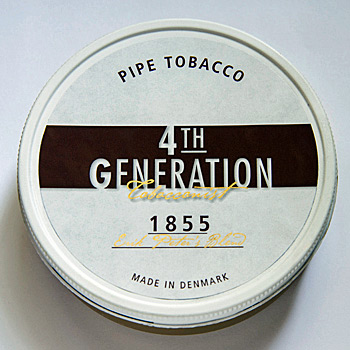 Erik Peter, his Great Grandfather founded his family’s tobacco business in Denmark and was known for his deep passion for natural tobacco flavours. Truly for the experienced pipe-smoker, 1855 is a ready-rubbed blend of exceptional golden, mature Virginia tobaccos that demonstrates the natural sweet Virginia taste and its pleasant aroma. The 1855 blend is an all-Virginia blend with very mature flue-cured tobaccos. There are a lot of natural sugars, and it is relatively a bit higher in nicotine. It’s a little bit stronger, but also has the natural sweetness of the mature Virginias. It’s not for someone just starting out smoking pipe tobacco. It’s for somebody that wants a nice full Virginia smoke.
Erik Peter, his Great Grandfather founded his family’s tobacco business in Denmark and was known for his deep passion for natural tobacco flavours. Truly for the experienced pipe-smoker, 1855 is a ready-rubbed blend of exceptional golden, mature Virginia tobaccos that demonstrates the natural sweet Virginia taste and its pleasant aroma. The 1855 blend is an all-Virginia blend with very mature flue-cured tobaccos. There are a lot of natural sugars, and it is relatively a bit higher in nicotine. It’s a little bit stronger, but also has the natural sweetness of the mature Virginias. It’s not for someone just starting out smoking pipe tobacco. It’s for somebody that wants a nice full Virginia smoke.
This blend, while described as ‘ready-rubbed’ would more fit my description of a broken flake. Chocolate-browns interwoven with bright-golds and flecks of coppery-red, this blend arrived slightly moist in the pouch, and benefited from a half-hour of drying time prior to packing. The long, thick chunks of flake handle wonderfully, responding very well to an air-pocket or fold and stuff method of packing.
The pouch note brings a very mild tang of mature Virginia tobacco, with an even milder hint of cocoa deep in the background. I must note that the latter may be due to cross-contamination with another of the Four Generations blends, as it does not translate into the flavour-profile or room-note in any way.
Charring-light and true light highlight the wonderfully bright, honey-dew and cherry sweet notes of Virginia tobacco. Hints of raisin and rich caramel provide depth to the thick creamy smoke. The sweet flavours are kept grounded by a mild leathery earthy note, belying the presence of a darker leaf.
As one approaches the mid-bowl point, the cherry-sweet notes begin to diminish, allowing the caramel sweet notes to grow proportionately. In an interesting twist, the room-note also reflects this change, taking on a deep, rich note not unlike fresh brittle. In addition, slightly spicy notes of cinnamon and nutmeg join the raisineque notes. The earthy, leathery notes continue to remain in the background, providing depth and character.
Near the heel of the bowl, the transformation of the Virginias continue, with the wonderful baked-goods flavours of the first two thirds taking a back seat, this time allowing the earthy notes to grow into fruition. This comes across as a deep, rich earthy-sweetness, not unlike a candied filberts.
Applying the delayed gratification technique with this blend causes the earthy, leathery notes to grow bolder, while the fruity sweetness takes on a more muted quality. In addition, a very mild piquant nuance, which can be more felt than tasted, becomes noticeable.
The room-note of this blend is rather pleasant, with rich, sweet tones of caramelized sugars, fresh cut hay, and mild notes of the sweeter baking spices. The nicotine level is spot on for my tastes – while it doesn’t threaten to send one into sweats and spins, it doesn’t leave a cigarette smoker searching for a fix.
This blend carries the disclaimer that it is ‘not for someone just starting out smoking pipe-tobacco’, which may scare people off, expecting a dark and heavy nicotine powerhouse like the other blends that carry the descriptor. Fear not – this blend is very well behaved, extremely complex and wonderfully sweet. An exceptional all day blend, I don’t mind telling you 1855 has found a place rather high in my rotation. I can only imagine what a few years in the cellar will do to this already wonderful blend – I very highly recommend it!
4th Generation 1897 (Erik Paul Stokkebye)
 Erik Paul, his Grandfather, was an entrepreneur and collector who loved to travel and experience many things. The 1897 blend is a colourful combination of light, golden Virginias, bronze Burleys and a touch of Black Cavendish. The base of rich vanilla combines with notes of mild, sweet honey for a gentle aromatic sweetness. The 1897 has more Black Cavendish in it and has more sweetness in terms of vanilla flavours, and it is a little bit milder.
Erik Paul, his Grandfather, was an entrepreneur and collector who loved to travel and experience many things. The 1897 blend is a colourful combination of light, golden Virginias, bronze Burleys and a touch of Black Cavendish. The base of rich vanilla combines with notes of mild, sweet honey for a gentle aromatic sweetness. The 1897 has more Black Cavendish in it and has more sweetness in terms of vanilla flavours, and it is a little bit milder.
I have to admit that on some level, this was the blend I was the least excited about. Reading the blend description, and smelling the strong vanilla pouch-note leaves one with little doubt that this is most definitely an aromatic type of blend. However as I applied flame to my first bowl, my fears were assuaged; this isn’t a run of the mill goopy vanilla blend, but rather a well composed, mildly flavoured tobacco with a room-note that will sway even the most delicate of noses.
This ribbon-cut tobacco features a mix of chocolate browns and glossy blacks flecked with coppery reds and tans. Slightly moist out of the tin, this blend does have the slightly slick feeling that denotes the presence of propylene glycol as a humectant. I found that it would burn when packed directly out of the tin, but really does benefit from a half-hour to hour of drying time. As with most aromatics, I found that this blend responds best to the looser packing methods; three-stage or codger pinch specifically.
From first light, this blend offers something of a surprise in it’s flavour profile. Certainly, vanilla plays a main-role, however one also gets strong, sweet honey-like notes, the mild woody flavour of Burleys, and a wonderful fruity note; somewhere between honeydew and Rainier cherry.
As you pass through the mid-point, the flavours begin to take an earthier turn, with the honey notes transitioning into a caramel/brown sugar note, while the woody Burleys grow slightly more pronounced. A very mild spice nuance develops in the final third; while the fruity sweetness grows extremely pronounced as you reach the heel of the bowl.
Applying the delayed gratification technique to this blend provides surprisingly good results. A marked caramel sweetness mixes with the woody notes of the Burleys to provide the main body of the flavour profile, while slightly piquant and fruity notes reveals themselves.
This blend is definitely not a nicotine powerhouse – I found myself craving more ‘oomph’, and as such found it difficult to remain in a nice relaxed cadence. Due to this, I discovered that this blend is very forgiving, and while it will bite eventually, you have to push very hard to get there. The room-note is nothing short of spectacular. Rich, creamy notes of vanilla and caramel with hints of the sweet spice seem to draw people in – on the occasions I have taken this blend out in public, I’ve had several complete strangers wander over to compliment the wonderful aroma.
This mild and well behaved pipe tobacco will likely be scorned by many pipe-smokers in favour of the more natural blends, however I found this to be extremely complex with enough tobacco flavour to keep my interest. Aromatic smokers will find this blend to be exceptionally well composed and well worth the investment. Neophytes to the pipe will find that it is very forgiving, making it a perfect introduction blend. I recommend it.
4th Generation 1931 (Erik Peter Stokkebye)
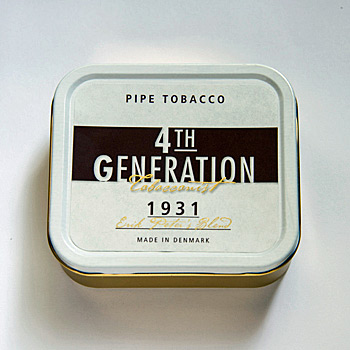 Erik Peter, his Father, was a larger than life person, full of energy and passion for his craft. His favourite tobacco was navy flake, and this full-bodied smoke is a perfect example of his passion. It strikes a natural balance in the distinct characteristic of superior Burleys and mature Virginias by using a small measure of Black Cavendish to please true flake lovers. The 1931 flake is primarily U.S. Burley, U.S. Mature Virginias and a little bit of Black Cavendish. It’s an all-natural blend that offers a dry, natural smoke without additives in terms of flavouring.
Erik Peter, his Father, was a larger than life person, full of energy and passion for his craft. His favourite tobacco was navy flake, and this full-bodied smoke is a perfect example of his passion. It strikes a natural balance in the distinct characteristic of superior Burleys and mature Virginias by using a small measure of Black Cavendish to please true flake lovers. The 1931 flake is primarily U.S. Burley, U.S. Mature Virginias and a little bit of Black Cavendish. It’s an all-natural blend that offers a dry, natural smoke without additives in terms of flavouring.
Of the four, 1931 was the blend that most excited me. I love flakes; mature Virginias excite me, and I am learning to love Burleys…but I also must admit that I was a little concerned about the presence of Cavendish.
Presented as a smaller flake of dark and chocolate browns liberally mixed with golden and black hues, this blend requires a little thought as to smoking. For the purposes of this review, I sampled it fully and partially rubbed out, folded and stuffed, and cubed – what follows in a compilation of my experiences with each. Although it is slightly moist on arrival, I would recommend smoking these directly out of the tin – they are not wet like some flakes, and although more difficult to light, you will be well rewarded for your effort.
The tin-note on this blend is quite mild, with hints of fresh-cut hay and moist earth, with underlying nuances of aged leather. The first thing that strikes me every time I light this tobacco is just how prevalent the deep, rich earthy and leathery notes of the dark-fired tobaccos are; indeed, I find they all but overwhelm the palate initially. However, after a couple of puffs, the flavour profile settles down, revealing the full complexity of this stout blend in all it’s glory.
Subtle, sweet notes of honey combine with the earthy richness of the dark-fired tobaccos to provide a black-tea like flavour, while a note similar to the peppery taste of bergamot make up the main body of the flavour profile, while the fruity and grassy notes can be detected in the background.
As you pass through the mid-way point with this blend, the honeyed sweetness begins to grow deeper and more complex, transitioning to more of a caramel flavour. The rich earthy notes take on a pronounced leathery mustiness while the peppery flavour continues to provide depth. The grassy and fruity notes detected on initially lighting remain, but slide deeper yet into the background. I also begin to detect a mildly woody flavour at this point, which I can only attribute to the Burleys making themselves known. This all combines to create a flavour profile not dissimilar to Earl Grey Tea, sweetened with honey and milk.
Nearing the heel of the bowl, the woody notes of the Burleys continue to grow in strength, moving from the background into the main-body of the flavour profile. The earthy leathery notes also grow in strength, while the caramel notes continue to provide a sweet base. I find the grassy and fruity notes all but disappear at this point – although they seem to return with a vengeance as one reaches the final puffs in the bowl.
The room-note of this blend is pleasant, with the sweeter notes coming through providing that ‘classic pipe-smoke’ aroma (please note: my training is with food tasting – pipe-smoke is one of the flavours we are taught to identify, rather than describe). The burning qualities are very good, however I did find that when folded and stuffed, I had to really work through the heel to smoke the entire bowl. The nicotine level, while not through the roof is certainly high, and as such care should be paid to this blend.
All in all, this unique and exceptional blend is nothing short of spectacular in my opinion, with a highly complex flavour profile that keeps one engaged throughout the smoke. Erik Michael notes that the 1855 blend is not for the new-smoker, but rather the more experienced – however I feel that that descriptor would fit in this case as well. If you like dark-fired, full-bodied tobaccos, then this blend should be right up your alley. I do – and therefore I must say I very highly recommend this blend!
4th Generation 1957 (Erik Michael Stokkebye)
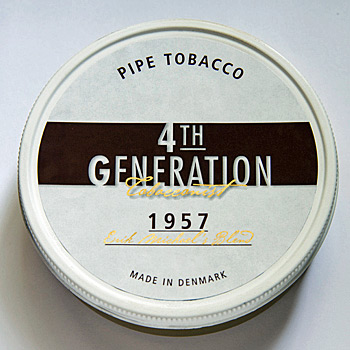 Erik Stokkebye’s personal favourite. Bright Virginias, light brown Burleys and a touch of Black Cavendish combined to create perfect harmony. A naturally sweet tasting blend, the soft, creamy vanilla adds to the elegant room notes. Perfect for a relaxing moment any time of the day. The 1957 has more Virginia tobaccos which makes it a little more creamy.
Erik Stokkebye’s personal favourite. Bright Virginias, light brown Burleys and a touch of Black Cavendish combined to create perfect harmony. A naturally sweet tasting blend, the soft, creamy vanilla adds to the elegant room notes. Perfect for a relaxing moment any time of the day. The 1957 has more Virginia tobaccos which makes it a little more creamy.
When I first read the description of this blend, I was expecting it to be similar to the vaunted ‘over the counter’ drugstore blends. This seemed to be backed up by the tin-note, with it’s caramel-sweet and vanilla notes supported by cocoa and nut – and while it is certainly similar in flavour to the ‘OTC’ blends, it is so much more.
Like the 1897, this blend is presented as a ribbon-cut which is rather moist directly out of the tin. It also features the slightly slick feel that denotes the use of Propylene Glycol as a humectant, however that is where the similarities end. This melange of coppery reds and nutty browns responds well to both three-stage and air-pocket packing methods.
Upon lighting, I was rather surprised at the rich and creamy smoke, with a mild yet complex flavour profile, featuring base notes of nuts and cocoa, with undertones of brown sugar and vanilla. This is rounded out by a very subtle sweet-spice not unlike cinnamon. This remains very stable through the first two-thirds of the bowl, then begins to undergo a series of minor changes.
Towards the heel of the bowl, the nut and cocoa notes begin to slip into the background, allowing the natural woodiness of the Burleys to develop. The sweet brown-sugar notes take on a more caramel flavouring, while the nuanced vanilla notes remain omni-present. In addition to these background notes, a mild buttery flavour begins to develop; providing an overall flavour profile similar to a nutty sweet-pudding (English pudding, not the heavily flavoured custard we in North America associate with pudding).
This blend burns very well, leaving a minimal amount of dottle to contend with. The room-note will please all but the most vehement anti-smokers, with hints of caramel and vanilla intertwining to provide olfactory pleasure. I would not recommend this blend for the delayed gratification technique, as I have found on relights that it takes on a slightly bitter quality.
The nicotine level in the blend is a touch on the low-side for my liking (but I am a self-admitted nicotine fiend), which when combined with the mild flavours and excellent behaviour in the bowl make this an excellent smoke for both neophytes to the pipe, and for experienced smokers looking for a mild, gentle smoke that doesn’t command constant attention.A very good blend – all that the so-called OTC’s have to offer and more – I recommend it!
Although Erik Michael Stokkebye resides in North Carolina, one of the major American tobacco areas, one can certainly taste the Danish influence on these four blends, and he has definitely met the high standards for which his family is known. Truly an international project over one-hundred-and-fifty years in the making, created in North Carolina, produced in Denmark, and imported by Phillips and King, these four blends should have a very wide distribution…and with the four blends presented at launch, almost every pipe-smoker should find at least one of these blends suit their personal tastes.
With the promise of the addition of blends containing Latakia in the future, I expect the Four Generations branding will win a place in the hearts of many a pipe-smoker – if the initial four blends are any indicator, we will be talking about the Fourth Generation line for years to come.




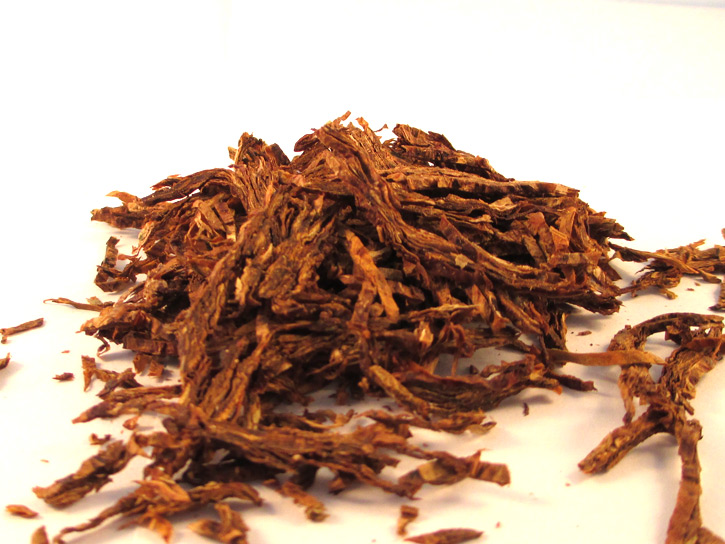
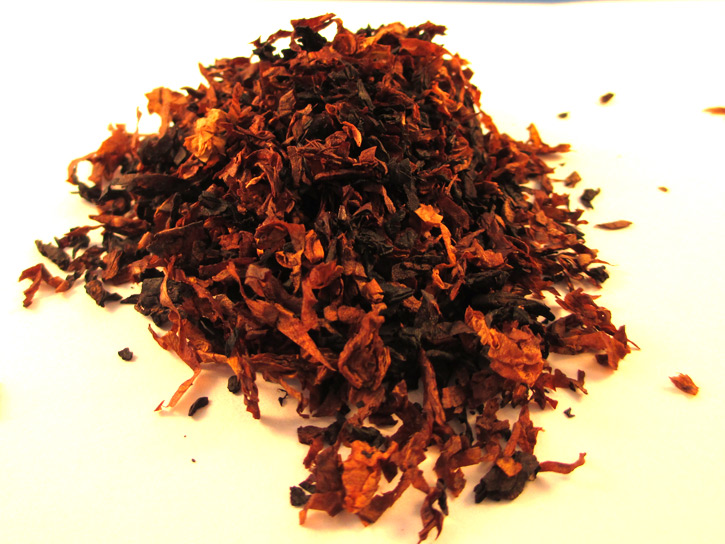
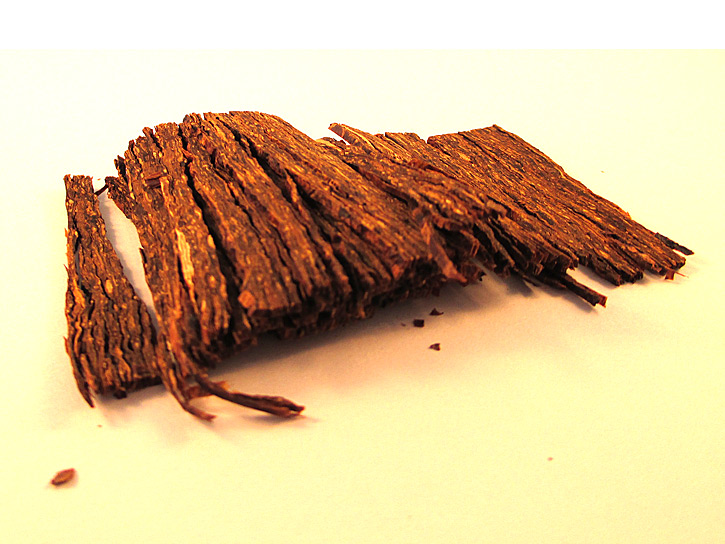
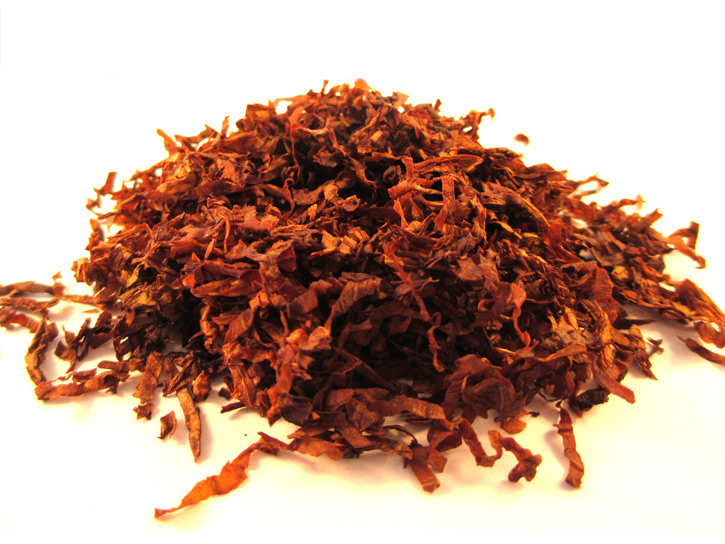














Fantastic reviews. Now I have to try each one out. Thanks for enabling…
-J
I have tried the 1855, and love it! Great review, I may have to pick up a couple of the others
Thanks for another tour de force review! I’ve sampled 1855 and found your observations very close to my own — except that you articulate them more artfully 🙂 It has quickly become my favorite Virginia — which says a lot since I smoke little else these days. There’s a tin of 1931 on the shelf waiting for me to dig in, and your review has me psyched-up. Thanks for the excellent writing and informative illustrations. As always, a nice job.